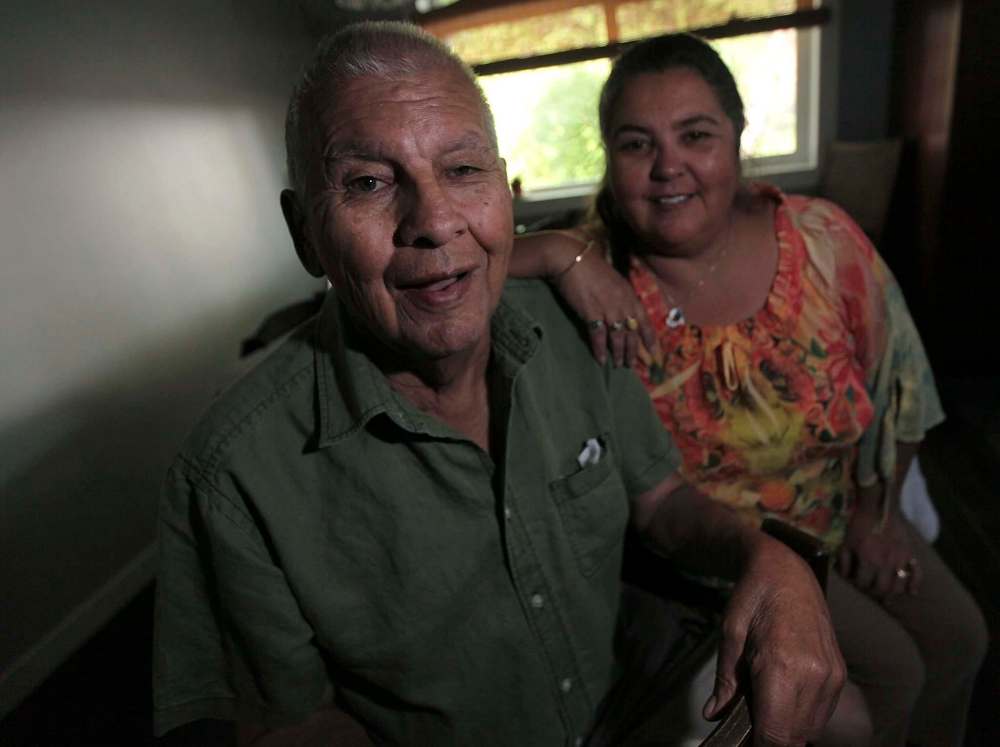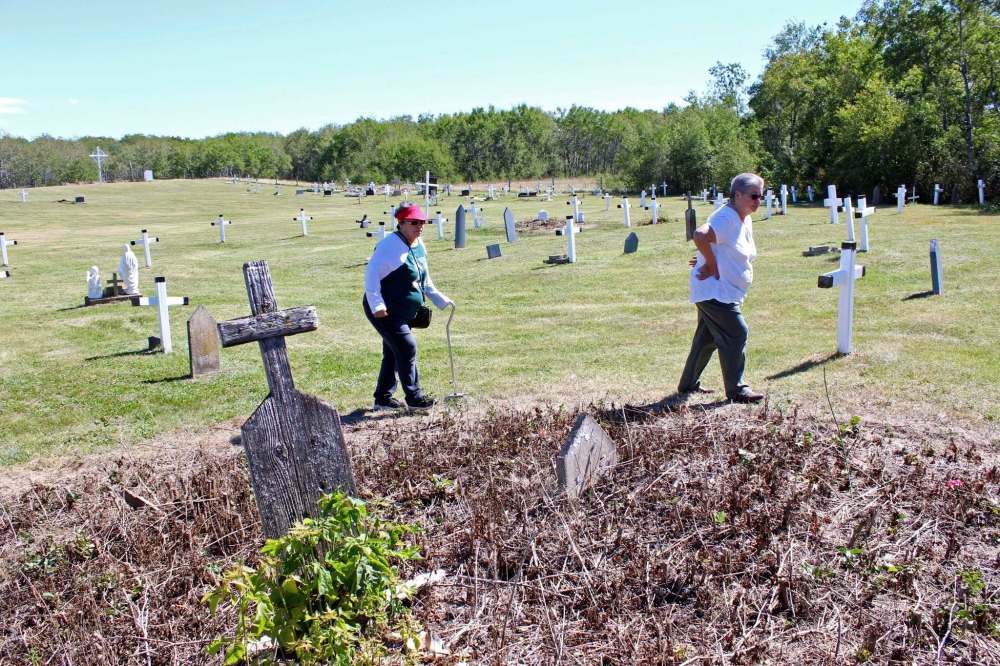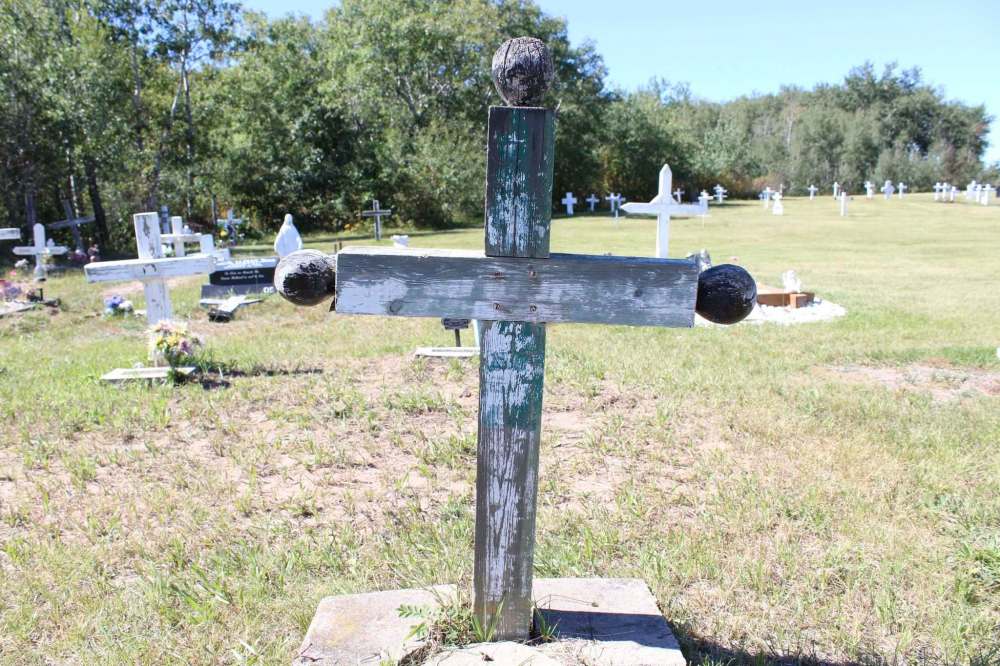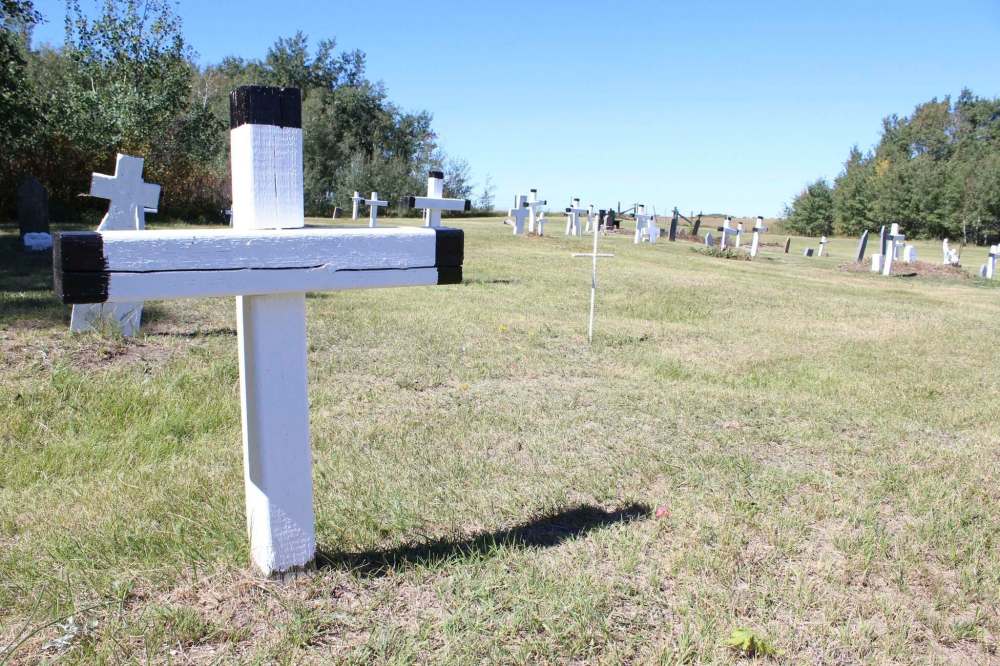Painful history
Métis resting place a testament to decades-old injustice
Advertisement
Read this article for free:
or
Already have an account? Log in here »
To continue reading, please subscribe:
Monthly Digital Subscription
$0 for the first 4 weeks*
- Enjoy unlimited reading on winnipegfreepress.com
- Read the E-Edition, our digital replica newspaper
- Access News Break, our award-winning app
- Play interactive puzzles
*No charge for 4 weeks then price increases to the regular rate of $19.00 plus GST every four weeks. Offer available to new and qualified returning subscribers only. Cancel any time.
Monthly Digital Subscription
$4.75/week*
- Enjoy unlimited reading on winnipegfreepress.com
- Read the E-Edition, our digital replica newspaper
- Access News Break, our award-winning app
- Play interactive puzzles
*Billed as $19 plus GST every four weeks. Cancel any time.
To continue reading, please subscribe:
Add Free Press access to your Brandon Sun subscription for only an additional
$1 for the first 4 weeks*
*Your next subscription payment will increase by $1.00 and you will be charged $16.99 plus GST for four weeks. After four weeks, your payment will increase to $23.99 plus GST every four weeks.
Read unlimited articles for free today:
or
Already have an account? Log in here »
Hey there, time traveller!
This article was published 06/09/2016 (3347 days ago), so information in it may no longer be current.
STE. MADELEINE — George Fleury’s family had been travelling by horse-drawn wagon for weeks with two other Métis families — much like the buffalo hunts of yore — searching for work.
It was the Great Depression, and they were picking up menial jobs — digging seneca roots, cleaning houses, clearing brush, doing farm work —to support their families.

When they returned to their Métis village of Ste. Madeleine in 1939, their house was smouldering from a government-ordered fire. The village had been razed.
“All that was left was our kitchen range sticking out of the ashes, and the bed rails,” said Fleury, 81, who was four years old at the time.
“I remember my mother crying. My father was shaking, his shoulders going up and down, crying.”
Ste. Madeleine is a lesser-known case of a forced relocation of aboriginal people in Manitoba’s history. About 250 people were removed.
However, this example wasn’t in the far north where it might go unnoticed, but along the Yellowhead Highway, between Binscarth and St. Lazare.
All that stands today of the village is the Ste. Madeleine Cemetery. The cemetery is haunting and beautiful at once. It teems with the white crosses of several hundred graves. The open prairie near the Assiniboine River undulates beneath the cemetery so the crosses look frozen in rolling waves.

The cemetery is also a monument to a time when some governments viewed aboriginals as lesser Canadians. The cattle lowing nearby are testament to that: people were evicted so cows would have pasture.
The Prairie Farm Rehabilitation Administration was established in 1935 to help cattle producers. Its mandate was to take marginal land out of crop production, which loosened the soils that blew off into the famous Dirty 30s dust storms, and return it to native grasses.
In consultation with provincial and municipal governments, certain land across the Prairies was designated to become community pastures for cattle. One of those parcels included Ste. Madeleine.
Ste. Madeleine was to be expropriated. Villagers were to receive land in kind but only if families were paid up on their property taxes. Only one or two families were. This was the Great Depression, after all, and many people couldn’t pay their property taxes.
One family received good farm land that is still in the family today. The rest were denied land. They received some monetary compensation, but amounts ranged widely from $250 to nothing, according to verbal accounts recorded in articles and books.
The sums suggest tax arrears may have been deducted from the amounts people received. It left many people with no home or money to start again.

“It’s really something to be chased out of your village just for cows,” said Kate Venne, who lives in Binscarth, and who gave a tour of the cemetery. Her grandfather, uncle and cousin are buried in Ste. Madeleine. “It’s just like saying a cow is better than I am.”
However, the Métis people didn’t realize the full enmity some of their neighbours had for them until those neighbours, hired by government to remove them, started setting fire to their homes. They shot their dogs, too.
They may have burned down their homes to prevent the Métis from moving back.
“Our dogs were all shot. They were taken from us,” Fleury said. “They said the dogs had a virus and were sick, but what they were actually doing was taking away our livelihood because the dogs were trained to hunt and haul stuff.”

Another account is found in the book, Ste. Madeleine: Community Without a Town by Ken and Victoria Zeilig.
Lena Fleury witnessed them shooting the dogs. Why did they do that? she was asked. “Just to make people mad, I suppose,” she told the authors.
People from Ste. Madeleine trace their ancestry back to the Red River Settlement, and the town may have been established as early as the 1880s.
“It was kind of a double whammy. We were kicked out of Red River, and then we were kicked out of here,” said Mary Orr, Venne’s sister.
The community of about 250 people were forced to disperse. Some moved to nearby communities such as Camperville in Manitoba or Spy Hill in Saskatchewan.
Others settled on road allowances (government land designated for future public roads) where they became squatters.
Their shanties made small villages they ruefully named after individuals they blamed for their conditions. One they named Selby Town, and another Fouillard Town, after municipal officials John Selby and Benoit Fouillard, who spearheaded the Métis ouster.

George Fleury’s family wound up in Fouillard Town. “We pitched camp on a road allowance, in a tent, while my father was building a log house. It was not a very nice house, but it provided shelter. Sometimes, while the house was being built, some kids slept under the wagon for shelter.”
Few former Ste. Madeleine residents prospered, other than those who received land. People had to start their lives over again and without the support and comfort of their community.
“It destroyed the bond that was strong when we were all together,” Fleury said. “People were close. As we dispersed to different areas, people became strangers.”
The Ste. Madeleine’s Roman Catholic Church, which was once in the middle of the cemetery, was dismantled and turned into a pig barn. Today, a three-metre white cross is where the church once was. The cross is inside a ring representing a Red River Cart wheel — a Métis version of a Celtic Cross.
The people of Ste. Madeleine were poor. Wooden crosses were the main grave markers. They had a unique style. The crosses are white with black patches on three ends. Some have wooden balls attached to the ends. Some crosses were made out of rebar.
The paint and names on the crosses have weathered away in many instances. The local chapter of the Manitoba Metis Federation, of which Venne is secretary and Orr vice-chairwoman, has been lovingly restoring the cemetery. Many of the crosses have been repainted, for example.
The RM of Ellice-Archie cuts the grass and trims around the graves.

Families will hold cookouts adjacent to the cemetery on Sundays, and Métis Days have been held at the site annually for the last 27 years. People camp or take trailers to the two-day festival of music and dancing, which includes craft tables, food booths and games.
There are new burials. Local Métis people associate strongly with the site, and the new generation is embracing it in honour of their parents and grandparents. To be buried there, Métis people must still get written permission from the PFRA office even though ownership of PFRA land is in flux. The Harper government ordered the PFRA to divest the land, which is being transferred to provinces and municipalities.
Local Métis also have to get approval every year for Métis Days.
The Metis federation hopes to make a case former residents were treated shamefully and should have their land returned.
bill.redekop@freepress.mb.ca


